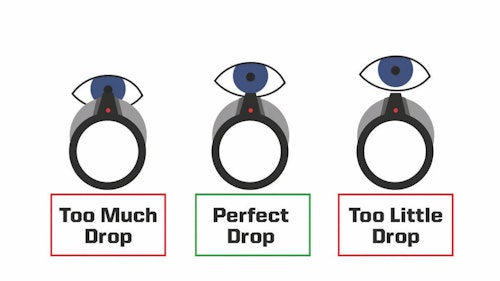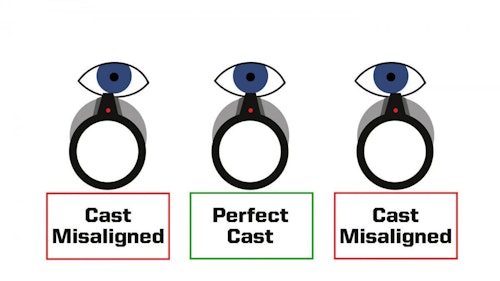The first time I went trapshooting I missed more targets than I hit. That set me on a path to learning everything I could about shotgun fit and shooting trap. I found out shotguns are more complicated than I knew.
My experience with shotguns was as a police officer using them in a tactical setting. These guns were used by right- and left-handed shooters alike. The lefties had to make allowances for the safety direction and ejection port. That’s just the way it was. Pooled (shared) weapons are meant to fit the broadest range of body types rather than an individual officer. That isn’t the case when you move into the world of sport shotgunning, where there are left- and right-handed guns. But it goes further than that. Shotguns are tailored to fit one person’s body type and shooting style.
To understand shotgun fitment, you’ve got to learn a few terms. Let’s look at the basics.
Length of pull
This is the length of the shoulder stock measured from the center of the trigger to the center of the butt (recoil) pad. There’s no single trick for deciding the proper pull length, but the goal is always the same — the stock should be as long as possible without interfering with mounting and swinging the gun.
Comb Height (Drop)
The comb is the top edge of the stock where the cheek rests. Comb height is the measurement from the top edge of the barrel to the top of the comb. This is usually expressed as measurements at the nose and the heel (rear) of the stock. A typical drop would be about 1½ inches at the nose and 2¼ inches at the heel.
Cast
Cast refers to the variation of the barrel's center line compared with the stock's center line. If you align a straight edge with the barrel, the stock may be slightly off to the left or right or directly in line with the barrel. This leads to two descriptive terms: Cast-off, where the stock ends to the right of the barrel axis, and cast-on, where the stock ends to the left. These are the terms for a right-handed shooter. They would be reversed for a left-handed shooter.
Pitch
Pitch is the canting of the butt pad as it relates to the bore axis. If the bore's centerline is horizontal, a neutral pitch would have the butt at a 90-degree angle. An angle greater or less than 90 degrees would be said to have a positive or negative pitch (see illustration).
If all of this seems rather complicated, that’s because it is. Most people pick up a shotgun and see how it “feels” when they shoulder it. They will then adjust how they hold the gun or rest their cheek on the stock to get the correct sight picture. It’s a bit awkward, but most don’t even consciously realize they are doing it. A competitive shooter takes a different approach and has their shotgun fitted by a professional. The goal is to mount the gun and have it line up perfectly every time.
For pistol or rifle shooters, it’s like the effect of a “natural point of aim.” If you point your gun toward a target with your eyes closed and then open them, you may find that you’re aiming to the left or right of where you intended. You would naturally compensate by twisting your body to align the sights with the target. It’s a largely unconscious movement that adds stress to the body. If you shift your feet slightly to line up with the target, you can raise the gun as before and have it correctly in line with the target. This is getting a natural point of aim and is one of the fundamentals of marksmanship. All of this is subtle but makes a difference in accuracy and consistency.
The Goal
The primary purpose of the multiple measurements, angles and adjustments is to fit the shotgun to the shooter’s body so that it fits naturally. The first adjustment is length of pull. The stock must be short enough so it doesn’t catch on clothing or body parts when mounted. It must also be long enough that the hand isn’t hitting the cheek during recoil. The next step is to get the alignment set. This means that once it is mounted, the eye lines up horizontally and vertically with the shotgun's bore without changing your hold. If the eye is to the left, you’ll shoot to the left. If it’s too high, your shots will go high. It doesn’t take much of an error at the stock to translate into significant errors (misses) at 30 yards.
The Test
Determining what adjustments are needed is relatively simple. Have your customer mount the shotgun and point it towards a mirror with their eyes closed. They’ll naturally shoulder it where it feels most comfortable. Then, have them open their eyes. Are they looking down the center of the barrel, or is their eye off to one side or the other? If it’s off to one side, then the cast of the stock needs to be adjusted until it is lined up. Was their eye too high or too low over the barrel? If so, then the drop will need to be adjusted to compensate.
One thing to remember is that fitting a shotgun isn’t something that you do immediately. They have to mount the gun enough times so that their actions are consistent enough to determine what changes are needed. But this exercise will allow you to explain how they can make adjustments if needed.
Fortunately, most shotguns designed for shooting clays come from the factory with a set of shims that allow shooters to make adjustments on their own. These wedged spacers go between the stock and the receiver, allowing adjustments to the stock cast and drop so it is angled correctly. Another option is to purchase a shotgun with an adjustable comb. This allows quick and easy adjustments that can even be done at the range if needed.
These are just some of the basics. Proper shotgun fitting is much more involved and requires a professional. But knowing these basics will be enough to help anyone who wants to shoot clays. It’ll get them started on the right foot. As a salesperson, try the test with various shotguns and see how stock profiles and types differ. You’ll then be able to speak from personal experience, which will help you explain fitment in simple terms that your customers will understand.








